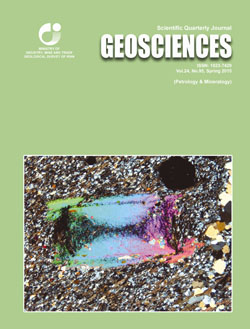Document Type : Original Research Paper
Authors
1 M.Sc. Student, Research Institute for Earth Sciences, Geological Survey of Iran, Tehran, Iran
2 Associate Professor, Islamic Azad University, North Tehran Branch, Tehran, Iran
3 Assistant Professor, Department of Geology, Faculty of Science, Kharazmy University, Tehran, Iran
4 Assistant Professor , Department of Geology, Zanjan University, Zanjan, Iran
5 Ph.D. Student, Islamic Azad University, North Tehran Branch, Tehran, Iran
Abstract
The Kharengun area is located in the Yazd province, Central Iran, 130 km east of Yazd city and 65 km northeast of Bafq city. Mineralization in Kharengun area occurred within calcic and dolomitic units of the Rizou Formation (equivalent to Soltaniyeh Formation) of upper Precambrian- lower Cambrian age. The ore minerals of this deposit includes smithsonite and hemimorphite, that is stratabound and formed epigenetically along layers and laminations of carbonate host rocks. The maximum grade of zinc in samples taken from the study area exceeds 36% and geochemical studies indicate significant absence of Pb along with Zn in this area. Therefore, the Kharengun mineralization is a monomineral Zn zone.The fluid inclusion microthermometry investments explain the role of meteoric waters in generation of this deposit. The homogenization temperatures and salinity of the inclusions show the similarity between these fluids and the solutions responsiblefor the development of epithermal deposits.The Zn mineralization present in this zone belongs to the nonsulfide supergene deposit class, and a mixture of wallrock replacement and direct replacement subclasses.
Keywords

